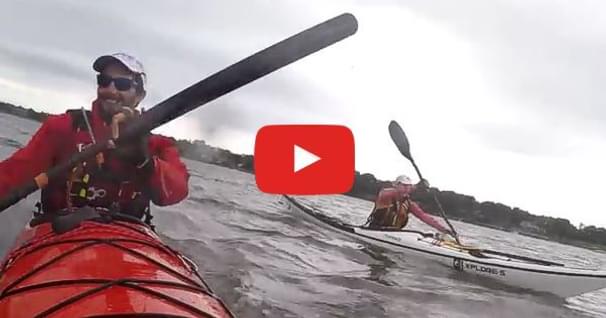Canoe Paddle Types
Canoe Paddle Types
Aside from personal grit, determination and sweat, it is your paddle that ultimately transfers all your energy and canoeing dreams into motion. A paddle is your companion and direct link to the water. Your first step in buying a paddle is to determine the type that best suits your needs. We've divided paddle types into four categories.
Recreational
Recreational canoe paddles are general-purpose tools for day trips around the cottage, the campsite or the nearby lake with family and friends. These paddles are typically made of inexpensive materials such as aluminum, plastic and cheaper woods. Wood recreational paddles often come in the same blade shapes as lakewater tripping paddles but are more simply constructed, using heavier or less durable woods. Aluminum and plastic paddles come in a variety of shapes and are inexpensive and very durable. In either case, what you save in cost you give up in lively performance, lightness or aesthetic appeal. When was the last time you saw a plastic paddle hanging over the fireplace?
Lakewater
Lakewater paddles are intended for lakewater travel requiring thousands of repetitious strokes. Traditional designs such as ottertail, beavertail and voyageur have long, narrow blades for smooth, repetitive strokes on deep, flat water. They are most often made of wood, for tradition and aesthetics more than any other reason. One-piece or laminated paddles made of woods such as ash, cherry, mahogany, maple, walnut and poplar offer lightness and beauty finely crafted into wonderful shapes. Compared to synthetics, wood is also warm to the touch and quiet. Wood paddles require a bit of care. Dents and scrapes at the end of the blade should be sanded and varnished or oiled to prevent splitting.
~Get the BWCAW Tee~
With over 1,090,000 acres of wilderness area, the BWCAW is a paddler's paradise.
Whitewater
Whitewater paddles generally have short, square blades for quick and powerful strokes in aerated, shallow water. Whitewater blades are most commonly flat or spooned to "catch" more water. Whitewater canoe paddles are built to withstand abuse from rocks. They can be made of wood, fibreglass, carbon or Kevlar with metal or resin-reinforced tips. While whitewater blades are shorter than lakewater blades, whitewater paddle shafts are typically longer. While other paddle types have a variety of contoured grip shapes such as pear grips, whitewater paddles usually have pronounced T-shaped grips for leverage and a precise, secure feel.
Performance
Performance canoe paddles are built for speed and often used in racing or fitness paddling. Weight and efficiency are more important than price, allowing manufacturers to use more expensive materials and experiment with a variety of blade shapes. Composite materials such as carbon and Kevlar are very light and strong. Bent-shaft designs set the blade at a slight forward angle to help keep it vertical through the most powerful portion of the stroke — the stroke is most efficient when the blade is perpendicular to the line of travel. When the clock is ticking, every little bit helps.
Choosing the Right Size
Choosing the correct paddle length can be either be a complex equation or as simple as lining up for a ride at the fair.
Some paddlers spend their lifetimes calculating such variables as torso and arm size, paddle blade size, paddling activity type, canoe type, seat style and height above the water.
Or you can walk up to a rack of paddles, find one that stands to between your chin and your nose, and go paddling. This old standby is a good rule of thumb for sizing your first paddle. With experience, you'll develop a personal preference.
Also pay attention to the paddle shaft. Although round shafts are easier to manufacture, oval shafts tend to be more comfortable. The shaft diameter should comfortably match the size of your hand. Wherever possible, try before you buy.
Reprinted with permission from Canoeroots Magazine 2003 Buyer's Guide.
Related Articles
Have you checked the price of canoe paddles lately? Good ones cost over $100; great ones approach $300…
What's the differences between Greenland style paddles and the Euro blade? Pros and cons, what's better,…
I resisted bent-shaft paddles long after they were in vogue. I thought they looked goofy and in…
The backbone of any paddle - the one structure that ties every part of the paddle together, from the…



